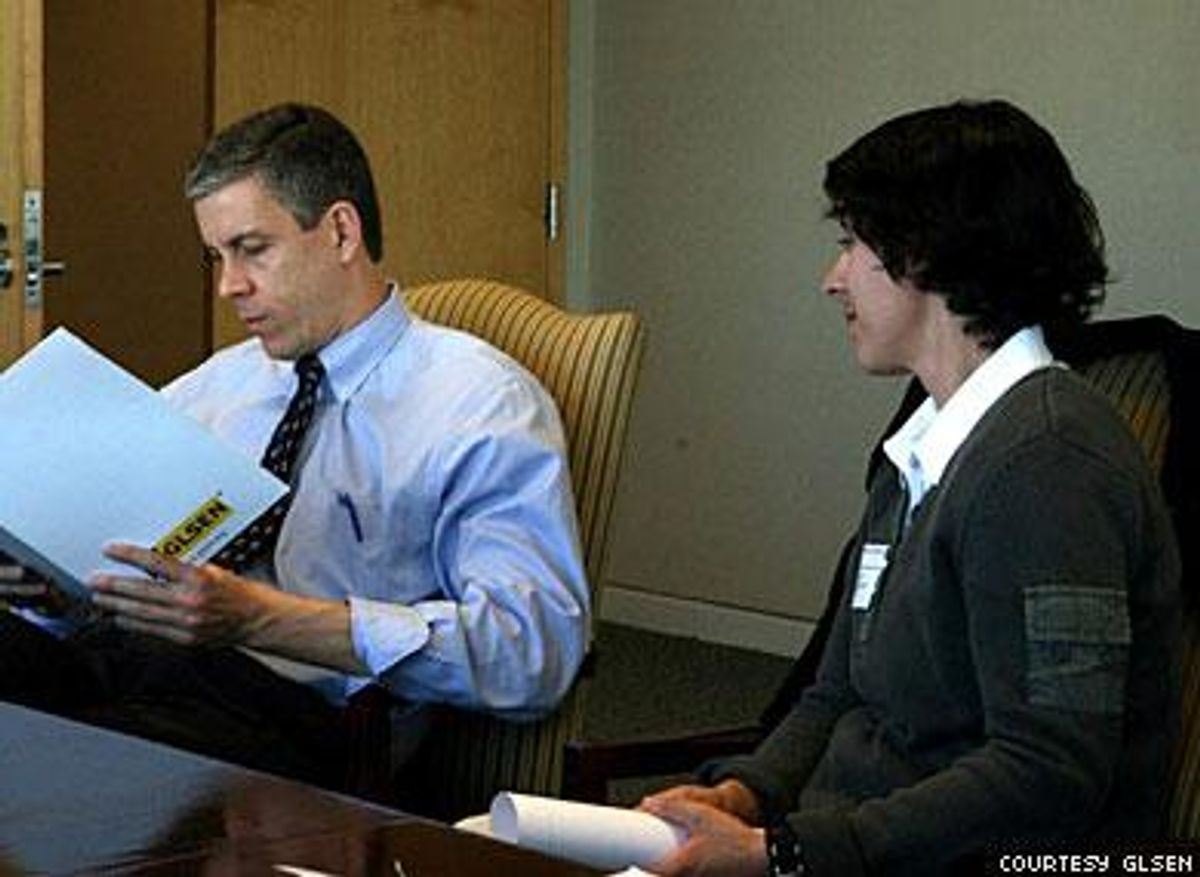
A visit with Secretary Arne Duncan of the U.S. Department of Education gives a glimmer of hope to those fighting to keep LGBT kids safe in schools.
March 24 2009 12:00 AM EST
November 17 2015 5:28 AM EST
By continuing to use our site, you agree to our Private Policy and Terms of Use.

A visit with Secretary Arne Duncan of the U.S. Department of Education gives a glimmer of hope to those fighting to keep LGBT kids safe in schools.
Yesterday afternoon I sat in Secretary of Education Arne Duncan's office as he heard from three brave students and two dedicated teachers who deal every day with the endemic anti-LGBT bullying, harassment, and violence in American schools. It was a profoundly moving milestone in the history of the safe schools movement.
As the country's top education official, Secretary Duncan faces overwhelming challenges. However, in response to the current economic crisis, he has been handed unprecedented resources to support public education in all 50 states. The massive stimulus package -- formally titled the American Recovery and Reinvestment Act of 2009 -- provides approximately $100 billion in supplemental federal education funding to shore up state education budgets decimated by the crisis, and improve student achievement through various federal programs.
For more than 15 years, members of the safe schools movement across the country have labored in the trenches, slowly collecting the data and building the case for the importance of our issues in the context of national education reform priorities. When we began this work, most principals and school staff didn't even think they had LGBT people in their schools, let alone recognize the impact of anti-LGBT behavior and bias on the quality of the education they were trying to provide.
In the office of the secretary of education yesterday, I witnessed that connection being made at the highest level. As a student described the fear that led him to skip school 17 times in the first semester, the secretary himself drew the connection to minimum state attendance requirements for graduation. As a teacher told of her despair when she and her one supportive colleague realized that they did not know how best to address the harassment faced by students in her school's hallways, the secretary linked their frustration to the need for effective implementation of school policies by school leadership at all levels.
Those of us in attendance realized that we had just turned a crucial corner. After the members of the delegation finished telling their stories, Secretary Duncan began a round of thoughtful, focused questions about effective, educationally appropriate interventions. He brought the issues squarely into the context of education reform priorities, bridging the gap that has frustrated safe schools advocates for so long. While we are committed to addressing anti-LGBT bias and behavior as a simple matter of justice for the students most grossly affected, our experience in schools over many years has clearly shown that these efforts will contribute to better educational outcomes for all, in healthy learning environments for all students.
As we left the secretary's office yesterday, we presented Mr. Duncan with a folder of concise, top-level presentations of our primary requests for action and supporting documentation. But that folder on his desk containing our positions and evidence -- literally five or six ounces of information -- is so much more than that. Today, sitting in the corner office of our nation's schools, is a slim distillation of decades of work and dedication, countless semesters of painful experience, and the collective wisdom of thousands of people of goodwill who want the best for our schools.
Viral post saying Republicans 'have two daddies now' has MAGA hot and bothered